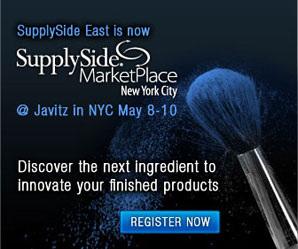When creating a new beauty or personal care product, things such as safety, efficacy and texture are just a few considerations to keep in mind. But what about packaging? From eco-friendly materials to the message on the PDP, packaging plays a big part in product marketing and sales. But as the population ages and the economy struggles to get back on its feet, packaging and its agenda are seeing a few changes.
The Changing Face of Beauty Packaging
Demographics are changing and evolving—from Baby Boomers to Gen Zers—and in order to stay “relevantly packaged," manufacturers need to adapt and pay attention to specific demographic groups. According to Benjamin Punchard, head of global packaging research at Euromonitor International, age-specific packaging will become more commonplace in the beauty and personal care industry. He also pointed out three additional factors affecting beauty packaging today: the aging population, the decline in disposable income, and sustainable and online efforts.
Make it ‘Age’ Pretty
Punchard said the number one demographic change that’s affected beauty and personal care packaging visuals is the aging population. By 2020, 25 percent of the world population will be older than 50. Rain or shine, the anti-aging category has weathered the economic storms with relatively strong growth. Euromonitor reported anti-aging sales have remained very dynamic because consumers feel fighting the aging process is more important than other areas of beauty and personal care. Yet, this category isn’t just about wrinkle-free, anti-aged skin; it’s about “aging" packaging, too. Traditionally, glass packaging has been popular with anti-aging products since it is associated with quality—clarity and weight—according to Punchard. But glass is on its way out, making room for the new wave of quality, i.e., hard-plastic packaging such as tubes and pumpable containers. Why? According to Euromonitor, it protects the high-end ingredients from oxidation, avoids waste and it’s a functional, straightforward, easy-to-use design.
Generation Gap
Euromonitor said Generation Z’s (aged between 8 and 19) love of digital is changing the face of packaging. An up-and-coming digital factor is QR codes (Check out this article on our sister websites—NaturalProductsMarketplace.com and NaturalProductsINSIDER.com—to see how QR codes are being used in the marketplace.). QR codes catapult packaging to the front lines since many of these codes are displayed front and center and on the exterior of a product—its packaging.
Generation Z is not only digitally in tune, but it has its eye on the green, i.e., eco-friendly packaging such as biodegradable casing and materials. The Internet has not only opened the floodgates to 24-7 advertising, purchasing and communication, it made going green a lot easier.
Note: This is where demographic-specific packaging comes into play. Gen Z may want QR codes, while Baby Boomers may want larger print font or easy-use bottles and pumps.
Recession Revolution
The 2008 recession weighed heavy on all industries. Not only did it cause a lockdown on consumer funds (and a reevaluation of what’s necessary and what’s a luxury), it affected the way manufacturers package their products. A shift in consumer buying habits and decision-making also made an impact, starting with beauty and personal care sales, all the way down to revamping product positioning. Euromonitor noted two trends as a result of the money crunch: masstige products and value packs. Masstige, aka high-end prestige products that are mass produced for the everyday consumer, is appearing on shelves in plastic bottles and refillable pouches; and value packs are using HDPE bottles to usher in affordable, value-pack packaging.
What’s New in Package Design
Just as age and price play a role in packaging, so do aesthetics. Consumers like pretty things (think Steve Jobs … iPod®, Apple®, etc.). Vintage, contemporary, sleek, ornate, serif or sans serif—these things matter; it’s not only how you deliver the product (bottle, tube, etc.), but the looks, too. One example is the contract manufacturer Maesa, which designed Benefit’s new skin care series—b.right—packaging: vintage glass bottles and jars that resemble apothecary aesthetics topped with a cork.
And although not the packaging itself, Kiehls ramped up its marketing by teaming up with one of the most prolific street graffiti artists—Shepard Fairey—and his Studio One design center to create a series of art-based designs for its skin care products.
Thinking outside the anti-aging jar can really put a product at the front of marketplace shelves. However, despite the innovation and upgrades in packaging, Euromonitor International predicts consumers will still spend frugally even though the economy is improving, which may hinder “revolutionary innovation."
But don’t let that scare you. Evaluate your budget and see if you can squeeze it in. Check out your competitors; see what they’re up to, and what design and packaging upgrades and approaches they’re making.






